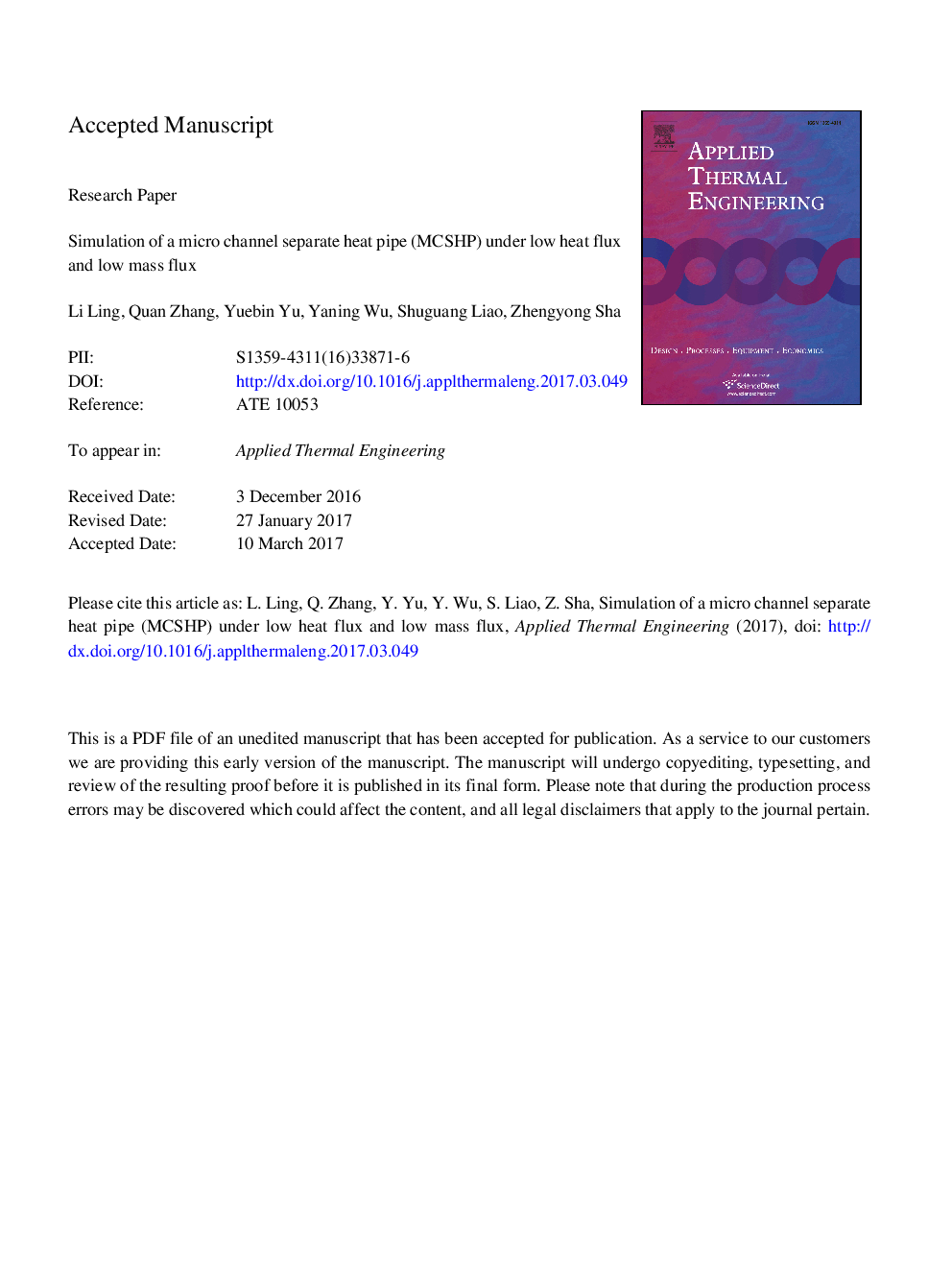| Article ID | Journal | Published Year | Pages | File Type |
|---|---|---|---|---|
| 4991264 | Applied Thermal Engineering | 2017 | 42 Pages |
Abstract
A micro channel separate heat pipe (MCSHP) has many great features for cooling applications. The design and control of an MCSHP generally employs a numerical simulation. However, the majority of available simulation models were developed for conventional channels where the hydraulic diameter is greater than 3 mm; as well, they generally have high heat flux and high mass flux. With an MCSHP, the channel size, heat flux and mass flow flux are much smaller, which might change the thermodynamics and simulation accuracy of the cycle, especially the two-phase flow section in the evaporator and the condenser. In this study, a distributed-parameter model with a combination of ε-NTU method and Nusselt laminar liquid film condensation theory was developed for the scenario. Six correlations were tested in the model under different filling ratio conditions. The results show that the model with the Gungor and Winterton correlation provides the best agreement, with an average relative error of about 5%. By using the selected model, the thermal performance of MCSHP under different refrigerant filling ratios, air flow rates and height differences were analyzed and findings were presented.
Keywords
Related Topics
Physical Sciences and Engineering
Chemical Engineering
Fluid Flow and Transfer Processes
Authors
Li Ling, Quan Zhang, Yuebin Yu, Yaning Wu, Shuguang Liao, Zhengyong Sha,
